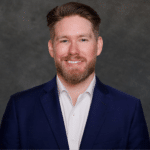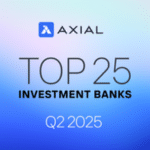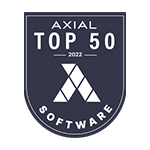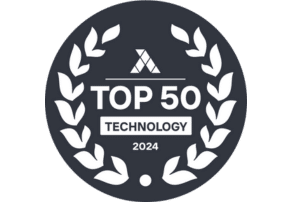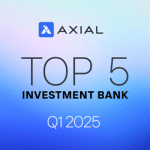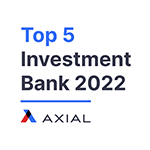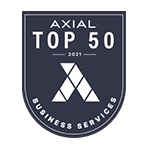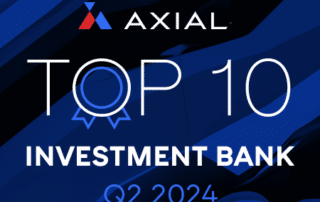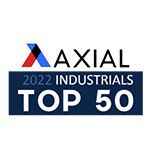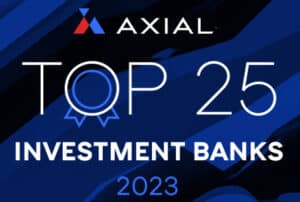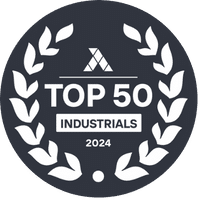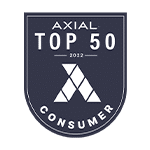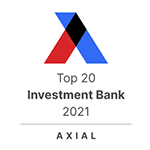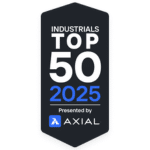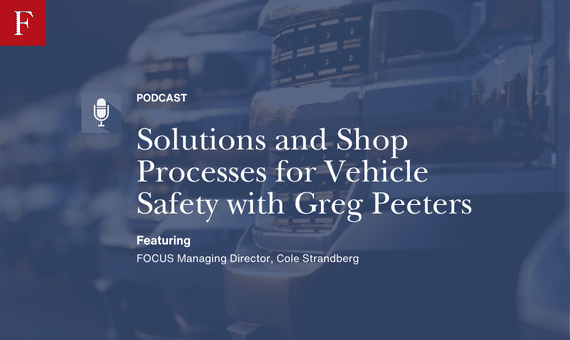
Solutions and Shop Processes for Vehicle Safety with Greg Peeters
In this episode of the Collision Vision driven by Auto Body News, we’re diving into the fascinating world of ADAS and calibration as part of our series titled Technology Takeover: The Impact of ADAS & Calibration. Our guest this week is Greg Peters, the CEO of Car ADAS Solutions, a company at the forefront of licensing and supporting dedicated ADAS calibration facilities across the country. Greg and his team are leading the charge in helping collision repair businesses navigate the complexities of ADAS technology, ensuring vehicle safety and creating new opportunities for growth.
Cole Strandberg: Since you were a guest here, I guess it was probably early 2024. We’ve gotten to know each other pretty well. I’ve gotten to know more about the Car 8 OS organization, so I want to start it off with asking you a question about exactly that. Talk to me about Car A DOS solutions and what inspired the creation of this vision, and perhaps more importantly, what’s the primary mission.
Greg Peeters: Yeah. So after, gosh, 3037 years of leadership in the collision repair industry, I had this very, very clear vision six to seven years ago that the automotive industry does not have a solution to calibrate vehicle safety systems correctly. And it’s complicated and our I, you know, I, I just man, I got on a path and our, our mission is to ensure vehicle safety systems perform exactly as they were engineered to perform post collision repair or windshield replacement or mechanical repair, anything that interrupts those systems.
Cole Strandberg: Fantastic. And from my perspective, you guys are doing a great job. Seems like you’re growing. You’re certainly personally, everywhere I look around the industry, whether it’s SEMA or seemingly every single regional trade show, you’re getting out there and spreading the message. Let me ask you this, there’s a lot of talk about ADAS calibration. It’s one of the most common topics here on the collision vision. What sets Cara ADAS apart, generally speaking, from other calibration providers?
Greg Peeters: So to summarize, right, we’re a business consultant that specializes in the startup and the continued success of ADOS calibration centers. For other people, we have some corporate owned, but for our 80 plus centers, they’re all owned and operated by by others. We just help set them up and keep them running and keep them growing.
Cole Strandberg: Fantastic and a lot to learn. I’m sure a a pretty steep learning curve for a newbie getting into the ADOS calibration business and I know you guys have the training to support that. Tell me about kind of who your target is for licensees. Is it entrepreneurs looking to break into the industry? Is it existing Body Shop owners? How do you view that?
Greg Peeters: It’s a variety call for sure, but, but I’d say our primary customer, right, our, our, our number one client is, is typically a small MSO, a regional MSO, but they have this book of business. They know it’s not getting handled correctly, right. Somebody shows up Thursday afternoon, they’re working in the parking lot in the detail Bay. They knock out these quote calibrations, which is basically getting the dash light off and, and they kind of turn their head and it’s, it’s, it’s, you know, for, for roughly 6 years, I’ve had this exact same conversation over and over again. And they know deep inside it’s not OK. They know it’s not right. But they, they just didn’t, they’re so busy, right? They, they just lived with that. And it’s, it’s funny, but as we get going, you know, when we start sharing more and more knowledge, they’re like, Oh my God, I can’t believe I was doing what I was doing. It it just, and they can’t go back. Like once they get to that jumping off, they can’t do it halfway anymore. They’ve got to go full, full into it. And we’ll talk more about that as we go on in our conversation here. But it’s a, it’s a fun ride, honestly. And, and, and I say, you know, with all of our clients out there, they become really good friends. It’s not just business right there. We share a lot of things together. So it’s, it’s now like this 80, some person family that, that we’ve got going on and it’s, it’s really, really rewarding and enjoyable.
Cole Strandberg: Well, I can personally vouch for that. You know, I obviously had the incredible opportunity of, of emceeing the car a DOS Owners Summit here back in 2024. Tremendously grateful for that, by the way. But an awesome network of folks, some really cool businesses, just a very, very cool thing. And talk to me real quick at a high level before we dive into a change in topic that you’ve actually set me up beautifully for. But I’d be remiss not to to kind of walk through what a standard ADAS calibration facility within the car ADAS network looks like.
Greg Peeters: Yeah, it’s so I think we, you know, I always say there’s got to be a starting point, right. And I think the starting point is doesn’t make financial sense. And so our, as a business consultant, our first job is really to work with our clients to develop a business plan and in very detailed be able to show what does the ROI look like, what does the bottom line look like? What does the cash flow look like from, you know, start up to month 12 and and so forth. So once the business plan is, is, you know, perfected and accepted, then we can move into, hey, you’re going to need the perfect spot to build it. So we’re doing this whole intricate market research in strategy and then we, we, you know, specifically say the ideal places to build a calibration center are are here and here. And a lot of times you need to service yourself, but the market is in desperate need for a, a really good solution. And then we have, you know, our own real estate commercial broker. We find the spots, we do these virtual tours, we get it nailed down, we fly in and we finish analyzing the space and then have an entire renovation plan, including all the supplies you’ll need. And we get that space to what we call OEM compliant or OEM centric. And so it involves, you know, the walls, the lighting, the floor, right? They all have to be. And there’s, there’s really, and I know I’m going to go on a tangent here. There’s two pieces to this right Number one, when you do the calibration work, diagnostic programming, calibration work in the right environment, the job goes pretty darn easy. It’s manageable. When you do it in the wrong environment, you are you’re compensating and recompensating and it turns into kind of a bullshit deal. It’s not, it’s not at all what it’s intended to be. I always say it’s like a surgeon that’s working out in the middle of a field somewhere parking lot instead of it in a lab, right? And so there’s so many pieces that require these, these things that OEMs layout how they want their calibrations done. So anyhow, you, you have two facets, right? One is it takes forever. There’s failure after failure. And then the other is, I don’t think it’s ever accurate to be here. I don’t think those systems ever are performing like they should. But then I think the other piece of this is, hey, you need the technician needs training, right? You got to find the right people. They need the the training, the certification, the development and the support this continuous type piece. They need a road map, a software program that that walks them through. Here’s the pre calibration steps and then the full documentation that hey, I’ve, I’ve got it. I’ve got to complete this step document before I can go into the next step. And then somebody just checking up on it a bit. Just some sort of a quality assurance deal to make keep them on track and then something to keep them updated, which is almost weekly with these new systems and, and all this stuff coming out right, Somehow they have to keep the, you know, the shop, the calibration center, the technicians have to have to be current.
Cole Strandberg: A lot there and and really helpful. And you’re the person that when I think of someone with a finger on the pulse in the ADOS calibration space, it’s Greg Peters. And I take that to heart. When you say certain things like that, the picture you paint of the surgeon in the middle of the field somewhere is is jarring and it’s quick to laugh off. But the truth is both are trying to save and protect lives. We want to make sure that we’re doing it in an environment that is appropriate to do that. And so you’re a professional. You set me up once again for the perfect segue. I do want to talk about the shop process and vehicle safety as it does relate to collision repair, and I want to zoom out first before we dive into the specifics of safety. But why is it critical for collision repair shops to prioritize ADAS calibration in their process?
Greg Peeters: Yeah, it’s it’s without it. It’s this last thing that gets added in. But you’re fighting this. Oh my gosh, we’re auto rental car, the customers leaving on vacation, you know, all these things, right? If it isn’t. And so I always, you know, say, OK, if it’s part of your process, who’s the decision maker who decides if a car needs a calibration and when does that happen? And how did you educate this person or this department to make those decisions? And you know, there’s there’s, you know, a lot of new softwares out to help identify that. But I think the keyword there is help. There isn’t. All of those systems are built very similarly on a on a very similar platform and none are 100% accurate. And so to have you know somebody that is making that decision in your facilities that has resource has has access and knowledge of the OEM procedures where to look of when a vehicle needs a calibration. I think those are are that’s just a super supercritical component. Now in the repair process. I think it’s thought that a calibration is the last. It’s right. We’re all done with the car now. It should go out for calibration. However, sensors continue to evolve. A sensor today sees four times further than one four years ago, five years ago, with optics it never had, and so on and so on. And so the actual placement of the sensor and how accurate it is sitting wherever it’s mounted to has become paramount. And so you can’t just say it’s good. There’s now the specific placement, alignment, aiming and leveling as critical components during or as part of the reassembly process. So to right put a bumper cover over a sensor that only has to come right back off again to re aim it so they can be calibrated. It doesn’t make any sense. That’s a bumper, brand new bumper we just painted and and so actually doing part of that calibration process, the pre aiming leveling it, it has to be part of the repair process now or it’s just very redundant, right. And again, I think when we don’t make calibration part of the repair process, you’re trying to work it in when we’ve already been talking to a customer about delivery times and now there’s, you know, everybody’s in a bad position and, and the decisions do get made. I, you know, we see it constantly that there may have been 5 vehicles that were earmarked, identified as the need for calibration. But guess what? Friday came, it was the end of the month and they just snuck them out. The dash light wasn’t on. They seemed to drive OK to them. They just delivered them without even though they knew better and, and so don’t get in the position right. If you if it’s part of the repair process, you don’t get there. But when it’s not, you’re just trying to work it in and it’s disruptive to quote the repair process so.
Cole Strandberg: I don’t know. Well, from my perspective it seems like ADAS calibration acceptance and understanding has been a bit of a slow process. I remember hearing about it and the opportunity it was going to create back in 20/16/2017. And it feels like now here over the last one to two years, it’s really been at the forefront of the conversation. You do a, a, you have an awesome video that I’ve seen you do in, in presentations about the importance of calibration and the potential impact of missed calibrations to the, the safety of of vehicles, their passengers, pedestrians. Talk to me about what’s at stake here by not doing things correctly in this world.
Greg Peeters: Yeah, human life, right. Yeah, Yeah. The So I think the misnomer that we hear is if it was that important, where’s all the court cases. And I, I guess I mix it up enough in this industry that the number of out of court settlements with some, you know, variety of size of players is I think far more than most people could imagine. And so don’t, don’t believe for one minute there isn’t, there isn’t legal stuff going on right now and there has been for quite a while. You know, I came across to figure and and we’ve done a lot of thinking about it and it was a degree of error during calibration equals 67 feet of stopping distance. I think that came from NETSA, if I recall in a study. But how do you measure degree and what is it? And I think it’s the combination of not doing the job correctly that could equal way more than a degree. So think about this manufacturer says fuel weight has to have a full tank of gas, right? We have to have a full tank of gas because that affects the plane of the vehicle. Well, if it’s a half a tank, how much of a degree is that, right? And then they say, well, tire pressure, tire pressure is very important. And so if the right front tire has, you know, 6 lbs low, what now there’s another part of a degree. And then what if there’s something in the trunk or what if the wheel alignment, the thrust angle is out of spec? That’s these are all factors adding up to build at least a degree, right? And then what if your floor is not level right, that that could be way more than a degree and the target itself is not sitting on the same exact plane as the vehicle. And I always say, listen, we’re calibrating. Our target is in close proximity to the sensor or an aiming electronic aiming process that is looking between 2:00 and 4:00 football fields now, so up to up to 400 meters are the newest systems like a little bit of air close up really jacks that that sensor up really makes it inaccurate. And if a sensors looking just a little bit too far down during calibration because the, the fuel tank was empty and it was supposed to be full and so the rear of the car sitting higher than it should, what what that means is for that automatic emergency brake system to to recognize the vehicle, measure that speed competitor and stop in time. There’s a lot going on there. It has to see it by a certain time, but if it’s a little too low, it doesn’t see it until it’s way too late.
Cole Strandberg: The stakes are so high, the margin for error is so low. Let me ask you this on the topic of liability. Is ignorance an excuse? Yeah.
Greg Peeters: Definitely not. And, and quite honestly, there’s so much information out there. Ignorance is no excuse at all, because you should know. You should know better.
Cole Strandberg: You’re a professor if you’re a shop owner. No, could not agree more. If you’re a shop owner listening to this and that statement and the concept of of liability, the concept of these stakes are high resonates with you. What steps are you going to take to ensure that you’re not messing up your calibration process? You’re you’re ensuring whether it’s you doing it or you’re outsourcing it, but in ensuring compliance with OEM standards and safety procedures for your ADAS calibration solution.
Greg Peeters: Yeah, I would say either get in the game or partner with a vendor who is in the game. And that doesn’t mean I’ve got, you know, a van and I can show up somebody who follows OEM procedure and documents. They did it right. Demand a certificate of calibration that shows it was actually completed. Get and I’m included in the dealership. By the way, if all you get is an invoice, shame on you. That is not any sort of documentation whatsoever, but a calibration should be completed by a certified technician in a certified environment.
Cole Strandberg: Certified environment. An interesting choice of terminology. We were talking about this in the pre show call. I’m going to set you up for a controversial answer here if you don’t mind, bear with me. Can you do a proper calibration in a parking lot?
Greg Peeters: No. So you can very much do an improper calibration and and probably do more harm. I’ll tell you what, and I know we’re going to get into this, but I’m going to jump ahead. Probably the world is changing, right? That the one thing about calibration it is, is evolving so rapidly. But in these next generations, we, we are fortunate because we get to work with these equipment companies and have now long term relationship. But but what you’re going to see coming is equipment keeps getting bigger and more expensive, but it’s going to play a role in documenting the vehicle was calibrated correctly. So let me give you some examples. It’s going to provide the levelness of the floor at the vehicle and around the target compared to the vehicle. You can’t take it away. It’s quite either damn you or or confirm you that it was done correct. It’s going to it’s going to measure and record lighting. It’s it’s going to make sure it’s already doing the target placement. It’s documenting it. It isn’t a picture of a tape measure anymore. It’s an optical picture that’s in development and, and, and coming out right now that shows exactly where that target was placed compared to where it was supposed to be placed per OEM standard. So yeah, it’s it’s it’s time to really get our stuff together in this industry and do this right.
Cole Strandberg: To me, we talk about the future of the EDOS calibration space and I want to ask you in a little bit later on to pull out your crystal ball and talk to me about the future there. But in the interim, I think it represents some tremendous opportunities that also come with its own set of challenges. What do you think the biggest challenge that a potential entrepreneur or a collision repair entrepreneur might face in considering bringing ADOS into their business?
Greg Peeters: Space, right? It’s not only having enough space because everybody wants a smaller space, but that it doesn’t work, but so the right space and getting the space to an OEM compliance for accurate calibrations and successful calibrations. And then I think it’s finding the right people, right? We have a lot of learnings along the way of who, you know, what is that makeup? What does that person look like? And then finding right the right training to, to, to bring this person along and do I, I think I, you know, I mention this all the time calibrating a safety system. You are the final checkpoint, right? It, it, when it comes to a calibration center, it doesn’t go get checked somewhere else to make sure the calibration center did it right. So it’s like pack and parachutes, right? It, it either works or it doesn’t work and somebody gets hurt. And so training is not on the job. Shame on anybody that thinks they can figure it out on the job because obviously you’re messing up a lot of cars along the way. And then the last is, I think keeping up with the continuous changes in developments. I think that’s the entry points.
Cole Strandberg: And they are continuous, right? I know that’s the case always changing. Talk to me about what does make a good ADOS calibration technician because I think it’s interesting in that it’s it’s quite a different gig than a body technician or or related. Where have you found success in finding good people?
Greg Peeters: So we have you know in our network, I think we’re approaching 300 certified technicians now. But you know, one of my goals, Colin, a very early onset was it felt like I had spent a career stealing body technicians from our competition, right? I mean, that was always our he steals from me, I steal from him and we we just give a bigger sign on bonus. And so my goal was this isn’t quite a flat rate guy or gal. This is more of this, this precision sometimes very patient retry, reset, understand electrical systems almost the opposite sometimes. So yeah, I would say the majority of our, our technicians have come from outside the automotive space. They love cars, they like cars. I, I would say if I could give you the profile, it’s a 25 to 35 year old that’s working at Best Buy, perhaps in the Geek Squad and has drove to work in a WRX Subaru with loud exhaust. That’s that’s kind of my makeup.
Cole Strandberg: That is painting an amazing picture.
Greg Peeters: Gamer at night. But I would say in that, that little profile I gave you, they’ve had jobs, they’re good employees, they’re not bad employees, but they’ve never had a career. They’ve never had something they could sink their teeth in. You know what I mean? It just they never really got behind. It was just a job to pay the bills. And when when you talk about you, you know what, what do we do? We protect people. That’s that’s what we make the world a safer place to drive. That’s our little tagline. And, and when they understand that, that the intricacies of the steps we go through and demand and how we document it, they understand the state of the industry and where they’re at right now and they get behind that, they they live and breathe that. And consequently for a lot of things, I mean, our turnover across coast to coast right now, our turnover is low single digits on technicians. So we’re we’re thrilled with that.
Cole Strandberg: Man, it’s it’s kind of sexy of a gig. It’s not your typical like Body Shop stall or mechanic Bay. It’s clean. And we’re seeing that in, in organizations who market for the industry like icar, incorporating this into their marketing because it is a little flashier than more traditional roles within the industry. That combined with being able to feel good about what you do. I love that we make the world a safer place to drive, give some purpose. It’s natural. I, I think that’s a very cool description of, of an ADOS technician. We talk about the challenges with getting into and being successful within the ADOS calibration space. Talk to me about how you view the opportunity in the ADOS calibration space for the future.
Greg Peeters: I think it’s just this we’re in this incredible era of opportunity and I think, you know, I think about the collision repair space and that is our our first level. We have the newest mix of vehicles with the most interruption to, to sensors, right, that will force the need for a calibration. But my, my goodness, the, the, the calibration industry is just the start of it. That’s our first level. But I mean, auto glass, we do quite a bit of work with auto glass now and they are hot into, you know, that that next generation of doing it right, that they know doing it out in the parking lot isn’t right and and they want to do it right. And their theory is, listen, if I need to do it in brick and mortar, why don’t I just get in the game? I really do it. But then there’s hey, there’s these these these used car reconditioning centers that are interrupting If there’s all the mechanical space, the wheel tire alignment space is getting, you know, there’s all this inquiry heavy truck. It’s just growing and growing. And I think in the near future, I think a certified calibration is going to become mandatory, not just saying it was calibrated. I think there has to be some sort of pieces to that that say this is, this is approved, this is this is a certified calibration.
Cole Strandberg: Interesting. When you say mandatory, who is making that mandatory?
Greg Peeters: I so government is is Oliver. So so and this is the segue that I’m going to take and run with. So recently NITSA passes, they call it the Federal Motor Safety standard #127 and it’s there. There’s really been no laws governing this at all. Even on the manufacturer’s side there’s voluntary stuff, right? Like hey, could you all get an automatic merchant brake system? But the standards of how that functions and what it can do was really non existent. They put some teeth in it and they said, hey, y’all got four years to get this figured out, but we want a system that. And by the way, the reason I’m going into this is this, they relate this directly into the repair side that if we’re going to make standards for OEM, the repair side is going to have standards too, and they equal the OEMs. So they said, hey, really there wasn’t a speed limit. It was maybe 40 miles an hour for automatic emergency braking that it had to brake. We’re saying it’s got to be 62 miles an hour in all weather, all light conditions. You got to not hit somebody and we want automatic invert, automatic emergency braking to kick in at 90 miles an hour. We, we want your systems to work. We want pedestrian avoidance, no contact and we want it etcetera, right. We want our, the consumer to not be able to deactivate safety systems. And again, we want anybody that alters a vehicle or repairs a vehicle to follow you have you’re obligated to follow these guidelines as well. So it’s coming.
Cole Strandberg: Big shift, big shift and, and a a great segue for you and even better segue for me. I appreciate that. I want to pull out The Time Machine right now and I want you to travel with me five years into the future. What does the ADOS calibration industry look like today?
Greg Peeters: Long answer, bring it. Yeah, I think there’s a race to autonomous right now. It’s Level 3 autonomous vehicles, right? Which Mercedes right first to bat got a legal Level 3, which means, hey, you can literally take your eyes off the road, your hands off the wheel at certain speeds and certain roads. But you know, I, I don’t think everybody knows this, but there are vehicles being sold right now that have the hardware to be level 4, just not the software. And so, so literally how cool is that right? You want to upgrade? We’ll run it overnight update to your car and you can now go hands free driving tomorrow. While that’s happening, the liability shifts from the driver to the manufacturer. And so if you say you can be hands free eyes off the road, the car owns the responsibility of an accident that comes down to who touched the car last. So, so obviously the manufacturer’s going to be pretty dialed in from a legal standpoint. If, if somebody in Mercedes has this already. Now if somebody is accessing our modules, we have to track them. It’s it’s not a free for all any longer. We have to know who touched it, what they did and it it’s stamped, it doesn’t leap. So if you touch an S Class 24 in Newark, 23 in Newark, you’re that technician is tracked to that vehicle.
Cole Strandberg: Man, interesting. The shift of liability is something that I have not given a whole lot of thought to. Obviously whoever touched the vehicle lasts at any point is going to be under a level of scrutiny, but when it’s self driving, that’s that’s full liability, full responsibility and and those stakes are pretty high. Is brick and mortar the future? And if so, while we’re here in the future, how many ADOS calibration facilities exist in the United States?
Greg Peeters: Oh man, I do think for the next, as far as I can see right now, brick and mortar, I think those systems will continue to see further and be more sensitive to accuracy. I, I, I, I look at, you know, every sensor that’s been improved upon, Heck, now the, the, the, the exact paint coat is important to see through. It’s just they’re, they’re more sensitive, accuracy becomes more important. Cole, I, I can only guess there’s a few 100 calibration centers at best in the US right now that isn’t including, and I would call those standalone, right as a separate or a separate chunk of another business that probably would not include. We have a stall in our Body Shop where we calibrate cars. And I will tell you, if done right, that’s not the worst thing in the world at all. That’s a, that’s a, that’s a good solution. If you did it right, if you had enough space and if you went through the, the floor leveling verification process and the lighting, that’s not a bad, I would never want to say that’s a bad solution. That’s a good solution. So I do think as I mentioned earlier, the equipment does not, it isn’t ever going to be in the near future, midterm future. It is never going to be, I’ve got a diagnostic tool and I can just calibrate cars without equipment. It takes space, it it takes equipment.
Cole Strandberg: What’s the breakdown today between calibrations that require dynamic calibration and static calibration?
Greg Peeters: The, you know, historically the domestic were were a dynamic or a driving type calibration and the Asian Europeans were were static up. Everybody’s branched like so. So now you have static calibrations on domestic, some domestic, especially front radar or you have it as an option either or. So I I think the general consensus was Once Upon a time that dynamic thing is easier. All you do is drive the car, hook the Tulip Dr. the car well, in that way at all, right. So it’s very weather dependent, traffic dependent, Rd. dependent. And guess what, when when it fails and it does, you’re scratching your head. Oh man. And so, you know, also, you know, I’m thinking of so many instances here where you would think it’d be a 10 minute drive and there’s times it’s 20253040 minute drives to get these things to go all the way through and get to the finish line. So not at all like a cakewalk. We still have a pretty good chunk percentage of cars that are plural or dual calibrations where you have to statically aim, calibrate that sensor and then within a certain amount of time with the diagnostic tool still connected to the vehicle, get in that car and start the drive cycle to finish learning the calibration.
Cole Strandberg: Interesting, interesting. And the amount of evolution that this industry has gone through and will continue to go through, I think is fascinating where a lot of these answers could be different when we talk again, call it a year from today. And it’s fascinating to watch and always appreciate your insights on that. As you know, the collision vision is very focused on the businesses surrounding the collision repair ecosystem and even more so on actionable insights for business people to improve their company operations. So with that in mind, what advice would you give to collision repair entrepreneurs considering whether to integrate ADAS calibration in house, to outsource it, or to maybe even partner with car ADAS and build their own facility?
Greg Peeters: I think it’s dependent Cole on what that current book of business looks like, the repair site for the collision center and also what’s happening in your market right now. What are those conditions? Again, our our initial stages with our clients is really this in depth market study where we can generate a very comprehensive business plan. I think when done right, it’s so rewarding. There’s so many benefits for a collision repair owner. Number one quality. You can go to bed at night knowing you repaired the car correctly. Including the calibration process. 2nd is it’s, you know, you own the whole repair process so you can control not only the quality but the cycle time, etcetera. And of course financially it’s very rewarding. There’s a great ROI when you do it.
Cole Strandberg: Understood. Fantastic. Shifting gears here right before the finish line on you too. Obviously, education is something that you and your team take to heart for the collision repair industry. What role does customer education and consumer education play in building trust, creating awareness that this even exists, and kind of getting everyone on the same page as to what to expect and and what’s important?
Greg Peeters: Yeah, I think, I think that’s the home run. I really, because, because there is very little customer awareness, but I, I think about all my years in the collision repair space and geez, maybe 10 years ago we were really into reselling to the customer during the delivery process. You know, here’s what we did and here’s the wheel alignment. And I, this is where I’m a really strong advocate of this certificate of calibration that when you’re delivering that vehicle, you can hand that consumer a certificate of calibration and say, listen, I want you to understand that you’re the, the, the, the, you know, pick a, pick a manufacturer demands that when this vehicle is in an accident, its safety systems are recalibrated, re aimed and certified to work like they were engineered. And here’s a certificate that that was done. So you, you and your family are protected while you’re driving your vehicle as you were before. I think that’s a really, really important step for the entire collision repair industry to get behind.
Cole Strandberg: It’s so interesting because you have micro things that you can control. We’re going to repair this properly, we’re going to calibrate properly. And then you have macro things where you really need industry buy in and that’s one of them. But I think the industry and and organizations like car a DOS, organizations like ICAR are on the same page and saying, hey, there’s got to be sort of this general got milk style of, of consumer education campaign that, you know, together we’re probably not going to do but or separately rather we’re not going to do. But together as an industry, we can row the boat in the same direction, really educate and make an impact. Greg, you’ve been so generous with your time. I always appreciate connecting. I always leave our conversations fired up. I’m going to leave you with one last question before we kind of drop some contact information, some information on your schedule coming up. And that is, what does the future look like for Caraidas?
Greg Peeters: We are, you know, we’re in a rapid growth opening, you know, quite a few centers each month. We’re coast to coast now. We have great coverage across the US. We continue to really ramp that up that growth right with our current footprint. We’ve attracted some great national players and, and so think about all of the people industries we’ve talked about, they’re looking for who could we use? And so our network has come up. And so as we’re, we’re, you know, working with these national players and, and you know, getting agreements finalized and stuff, it just keeps adding this tremendous value to our network that exists already. It is growing so fast that hey, when I join, I also get an automatic book of business because I’m on with this, this and this. And and so I think that’s, you know, that’s always been our vision and, and that’s the step we’re at. That’s the phase we’re at right now. So looking for a great new partnerships like that, associations like that, etcetera. I applaud I I we’re in such a magical moment with all of these new collision repair associations. I don’t think they’re popping existed, but they’re getting popular, right? And so the opportunity to go present and share knowledge at these events has just been an outstanding experience for me. I, I just absolutely love it. And we’re, we’re booking up all of our spring and first half of summer and it’s just, you know, you get to see now it’s my two second, third, fourth trip there. And it’s just you get to see friendly faces and, and get to run into guys like you. And I really looking forward to it.
Cole Strandberg: Awesome, awesome. Well, anybody who’s going to be on the trade show circuit in 2025, highly recommend checking out anything Greg’s doing. He gives a great presentation, gives a great education on the industry, the opportunities, the challenges, everything you’ve heard here on steroids. Please do check them out, Greg, for folks who want to learn more about Caradas or get in touch with you. Where can they do that?
Greg Peeters: Caradas.com. CARAD. As.com right on there is a Big Blue tab that says, you know, learn about owning your own calibration center. We also have just loads of blogs and information to to, you know, just just cruise it. But yeah, we’d love the opportunity to spend 30 minutes together with anybody and answer questions and, and and talk more about it.
Cole Strandberg: Fantastic. It’s an easy enough link, but I’m going to include it in the show notes anyway for anybody who might be driving. Click that after the fact. No need to write that down, Greg. An absolute pleasure to spend some time with you. Thank you for joining us on The Collision Vision.
Greg Peeters: Thank you, Cole. Wait, I sure appreciate the opportunity. Look forward to look forward to seeing you this spring.
Listen and Follow The Collision Vision.

